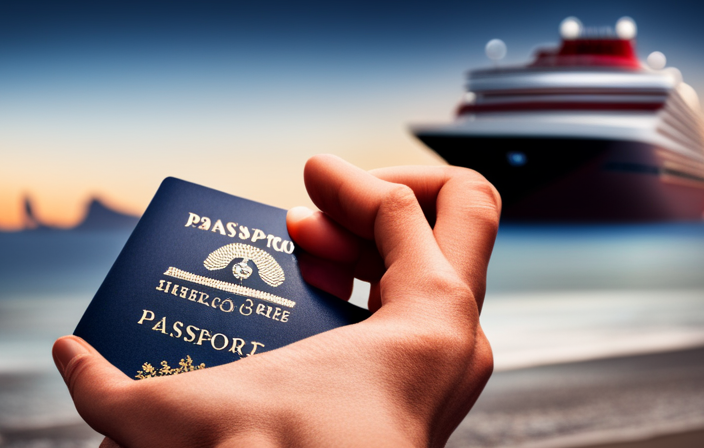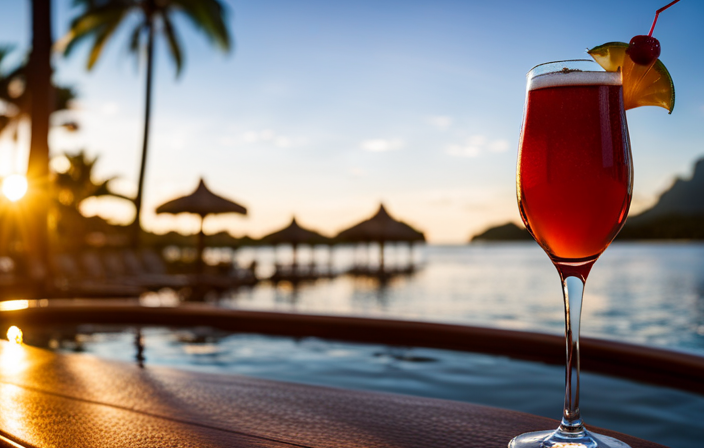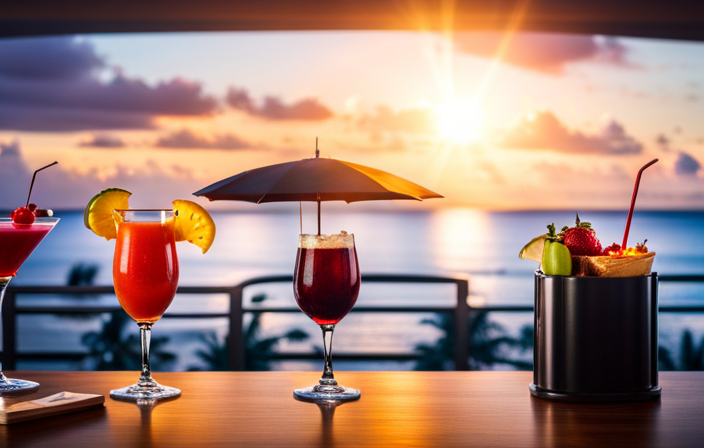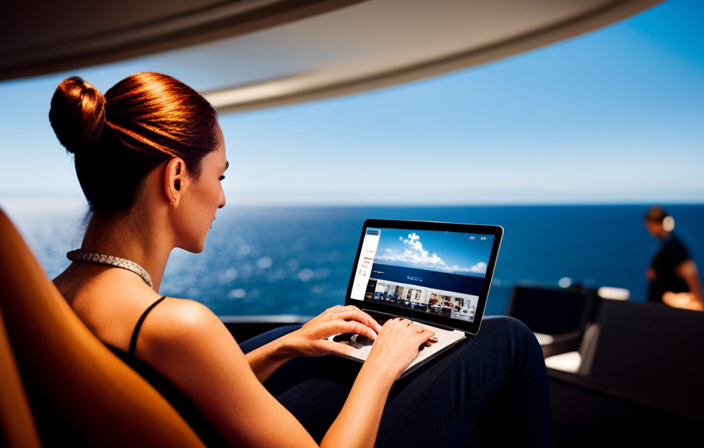Cruise News and Updates
Cruising Challenges: CDC Delays, Safety Guidelines, and Industry Impact
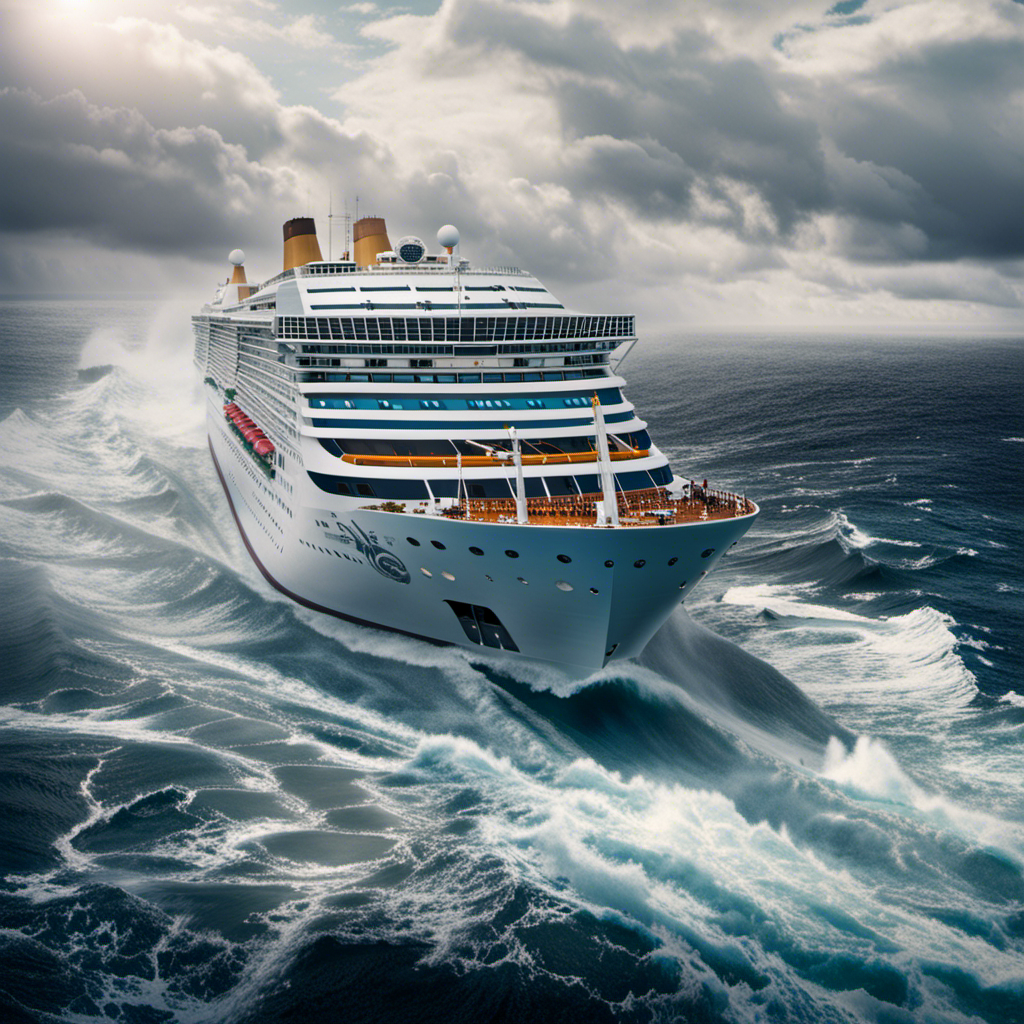
As someone looking forward to the resumption of cruise vacations, I am closely monitoring the challenges facing the industry.
The Centers for Disease Control (CDC) has continued to delay the no-sail order for US cruises, causing further frustration. Even after receiving approval, there are doubts about the immediate readiness of ships to sail.
In contrast, Norway has successfully resumed cruising by implementing comprehensive guidelines for safe sailing. However, cruise lines are confronted with hurdles such as implementing safety measures, training crew members, and ensuring adequate supplies.
The future of Norwegian Cruise Line and the industry remains uncertain, but their resilience is crucial for recovery.
Key Takeaways
- The CDC’s continuous postponement of the no-sail order for US cruises has resulted in a delay in the resumption of cruises from US ports.
- Norway has been one of the first places to resume cruising, with the Norwegian Directorate of Health and Norwegian Institute of Public Health releasing comprehensive guidelines for safe cruising.
- Cruise lines face challenges in resuming operations, including implementing safety measures and protocols, training crew members, and ensuring the availability of necessary supplies and equipment.
- The cruise industry has been significantly impacted by the COVID-19 pandemic, experiencing a decline in bookings and revenue, job losses, and financial challenges. To regain passenger trust, strict health and safety protocols have been implemented, and collaboration between cruise lines and health authorities is underway to develop industry-wide safety standards.
CDC’s Continuous No-Sail Order: Implications for Cruising Industry
I’m concerned about the impact of the CDC’s continuous no-sail order on the cruising industry. The delay in the resumption of cruises due to the CDC’s order has had a significant impact on the industry.
Cruise lines have been waiting for several months to resume operations, and the uncertainty surrounding the timeline for resumption has caused financial challenges for the companies involved. The CDC plays a crucial role in determining when Norwegian Cruise Line and other companies can sail again from US ports.
The continuous postponement of the no-sail order has led to skepticism regarding the immediate readiness of ships to sail even after CDC’s approval. This delay has also hindered the industry’s ability to recover from the decline in bookings and revenue caused by the COVID-19 pandemic.
The cruise industry is eagerly awaiting the lifting of the no-sail order to resume operations and regain passenger trust.
Skepticism and Readiness: Challenges in Resuming Cruises
It’s uncertain if the ships will be fully ready to sail immediately after the CDC’s approval. The resumption of cruises is met with public skepticism and concerns about the readiness of the ships. Here are three challenges in resuming cruises:
-
Crew Training: Cruise lines need to train their crew members to adhere to new health and safety guidelines. This includes implementing rigorous sanitation protocols, practicing social distancing, and conducting regular health screenings. The crew plays a crucial role in ensuring the safety and well-being of passengers on board.
-
Public Skepticism: The cruise industry has faced significant scrutiny due to the COVID-19 pandemic. Rebuilding passenger confidence and alleviating public skepticism is a major challenge. Cruise lines must communicate their enhanced safety measures and demonstrate their commitment to passenger health and well-being.
-
Implementation of Safety Measures: Cruise lines need to implement necessary safety measures and protocols on board. This includes enhanced sanitation practices, increased availability of hand sanitizers, and proper ventilation systems. Ensuring the availability of necessary supplies and equipment for these measures is essential.
Overcoming these challenges will be critical for the cruise industry to resume operations successfully and regain passenger trust.
Waiting Game: Months of Delay for Cruise Resumption
After months of waiting, the resumption of cruises from US ports is still uncertain. The delay caused by the Centers for Disease Control’s (CDC) no-sail order has had a significant impact on the cruise industry’s recovery timeline.
The industry was hoping for a prompt resumption of operations, but the continuous postponement of the no-sail order has created uncertainty. Cruise lines are eager to get back to business, but they are also concerned about the readiness of their ships after receiving CDC’s approval.
The delay has not only affected their financial stability but has also raised questions about implementing necessary safety measures and protocols on board. The industry is now faced with the challenge of training crew members to adhere to new health and safety guidelines, ensuring the availability of necessary supplies and equipment for enhanced sanitation, and rebuilding passenger confidence in cruising again.
The CDC’s delay impact has had a significant impact on the cruise industry’s recovery timeline, making it difficult to predict when the industry will fully recover.
Norwegian Cruise Line’s Fate: CDC’s Approval as a Determining Factor
Norwegian Cruise Line’s fate hinges on the Centers for Disease Control’s approval for the resumption of operations. The CDC plays a crucial role in determining when cruise lines can sail again, and their approval is eagerly awaited.
Here’s a closer look at the current situation:
-
CDC’s Role: The CDC has been continuously postponing the no-sail order for US cruises, leading to a delay in resuming operations. Their guidelines and regulations are instrumental in ensuring the safety of passengers and crew.
-
Norwegian Cruise Line’s Readiness: The cruise line has been working diligently to prepare for the eventual restart. They have implemented necessary safety measures and protocols, trained crew members, and secured adequate supplies and equipment for enhanced sanitation.
-
The Wait: Norwegian Cruise Line, like other cruise lines, has been waiting for several months to resume operations. Their readiness and adherence to CDC guidelines will determine when they can set sail again.
As the industry eagerly awaits the CDC’s approval, Norwegian Cruise Line and others continue to navigate the challenges and uncertainties brought about by the COVID-19 pandemic.
Norwegian Directorate of Health’s Comprehensive Guidelines for Safe Cruising
I found the comprehensive guidelines from the Norwegian Directorate of Health to be informative and helpful in ensuring a safe cruising experience. These guidelines, developed in collaboration with health authorities, provide a detailed roadmap for Norwegian cruise lines to follow in order to protect the health and well-being of passengers and crew members.
To give you an idea of what these guidelines entail, here is a table outlining some key measures:
| Guideline | Description |
|---|---|
| Enhanced sanitation protocols | Increased frequency of cleaning and disinfection on board |
| Social distancing | Measures to maintain physical distance between individuals |
| Screening and testing | Pre-boarding health checks and COVID-19 testing |
| Training and education | Crew members trained on new health and safety protocols |
Implementing Health Measures: Challenges Faced by Cruise Lines
By prioritizing the health and well-being of passengers and crew members, cruise lines face the challenge of implementing and enforcing new health measures on board their ships. One of the key challenges is ensuring that all crew members are trained to adhere to the new health and safety guidelines. This includes training them on proper sanitation protocols, social distancing measures, and the use of personal protective equipment.
Cruise lines are investing significant time and resources into providing comprehensive training programs for their crew members to ensure that they are well-prepared to maintain a safe and healthy environment on board.
Another challenge is building passenger confidence in cruising again. Cruise lines are taking proactive steps to communicate their enhanced health and safety measures to potential passengers, highlighting the rigorous protocols in place to protect their well-being. This includes increased sanitization, improved ventilation systems, and pre-cruise health screenings.
Training and Adherence: Ensuring Crew Compliance With Safety Guidelines
Enforcing new health measures on board the ships, crew members must undergo comprehensive training to ensure compliance with the safety guidelines. This training is crucial for the safety of both the crew and the passengers. The crew training includes learning about the proper use of personal protective equipment (PPE), practicing good hygiene and sanitation techniques, and familiarizing themselves with emergency protocols. A three-column, five-row table can be used to illustrate the different aspects of the crew training:
| Training Topic | Description | Importance |
|---|---|---|
| Proper use of PPE | Crew members learn how to correctly wear and dispose of masks, gloves, and other protective gear. | Ensures maximum protection against the spread of infectious diseases. |
| Hygiene and sanitation | Crew members are trained on proper handwashing techniques and cleaning procedures for common areas and cabins. | Reduces the risk of contamination and maintains a clean environment. |
| Emergency protocols | Crew members are taught how to respond to different emergency situations, such as fires, medical emergencies, and evacuation procedures. | Ensures the safety and well-being of passengers and crew in case of emergencies. |
Supplies and Sanitation: Overcoming Challenges in Enhanced Hygiene
When it comes to resuming cruise operations, one of the major challenges faced by cruise lines is ensuring the availability of necessary supplies and equipment for enhanced sanitation.
With the implementation of enhanced hygiene protocols, cruise ships need to have adequate sanitation supplies to maintain a clean and safe environment for passengers and crew. This includes items like disinfectants, hand sanitizers, masks, gloves, and cleaning equipment.
However, sourcing these supplies can be a challenge due to high demand and global shortages caused by the ongoing pandemic. Cruise lines must work closely with suppliers to secure these necessary items and ensure they have enough stock for regular use.
Additionally, they need to establish efficient systems for restocking and replenishing supplies to maintain the highest standards of cleanliness and hygiene onboard.
Rebuilding Trust: Public Perception and Confidence in Cruising Again
I believe it’s crucial for cruise lines to focus on rebuilding public trust and confidence in order to revive the industry. With the impact of the pandemic, the cruise industry has faced significant challenges. These include a decline in bookings and revenue, job losses, and strict health and safety protocols.
To address these challenges, cruise lines must tackle the issue of public perception head-on. Here are three key points to consider:
-
Transparency: Cruise lines should be transparent about their safety measures, protocols, and compliance with health guidelines. This transparency will help rebuild trust and assure passengers of their safety.
-
Communication: Effective communication is vital in rebuilding trust. Cruise lines must proactively communicate their efforts to prioritize passenger health and safety, address concerns, and provide updates on industry-wide initiatives.
-
Collaboration: Working together with health authorities, industry experts, and destinations will not only help develop industry-wide safety standards but also demonstrate a unified commitment to passenger well-being.
Frequently Asked Questions
What Is the Current StatUS of the Cdc’s No-Sail Order for US Cruises?
The CDC’s no-sail order for US cruises is still in place, causing significant impact on the cruise industry. The industry is eagerly awaiting updates from the CDC regarding the resumption of cruises.
How Have the Delays in Resuming Cruises Impacted the Cruise Industry?
The delays in resuming cruises have had a significant impact on the cruise industry. Financial losses have been staggering, with cruise lines struggling to recover. The road to cruise line recovery will be challenging and require innovative solutions.
What Are the Key Guidelines Outlined by the Norwegian Directorate of Health for Safe Cruising?
The Norwegian Directorate of Health has outlined key guidelines for safe cruising. These guidelines focus on implementing safety measures in the cruise industry, ensuring the health and well-being of passengers and crew.
What Challenges Do Cruise Lines Face in Implementing Necessary Safety Measures and Protocols?
Implementing necessary safety measures and protocols presents challenges for cruise lines. Difficulties include training crew members, ensuring supplies and equipment for enhanced sanitation, and building passenger confidence amidst public skepticism.
How Has the COVID-19 Pandemic Affected the Cruise Industry in Terms of Bookings, Revenue, and Job Losses?
The COVID-19 pandemic has had a significant impact on the cruise industry. Job losses, revenue decline, and booking cancellations have been widespread. The industry is implementing strict health protocols to regain passenger trust.
Conclusion
In conclusion, the resumption of cruises from US ports continues to face delays as the CDC postpones the no-sail order. This has had a significant impact on the cruising industry, leading to declined bookings, job losses, and financial challenges.
Norwegian Cruise Line’s fate is closely tied to the CDC’s approval, which remains uncertain. However, the industry has shown resilience and adaptability in implementing strict health and safety protocols.
As the industry navigates these challenges, it is crucial to rebuild public trust and confidence in cruising. Like a ship sailing through stormy waters, the industry must weather the challenges and steer towards a brighter future.
Meet Asra, a talented and adventurous writer who infuses her passion for exploration into every word she writes. Asra’s love for storytelling and her insatiable curiosity about the world make her an invaluable asset to the Voyager Info team.
From a young age, Asra was drawn to the power of words and their ability to transport readers to far-off lands and magical realms. Her fascination with travel and cultures from around the globe fueled her desire to become a travel writer, and she set out on a journey to turn her dreams into reality.
Cruise News and Updates
Safely Experience And Support The Future Of Cruises In 2021
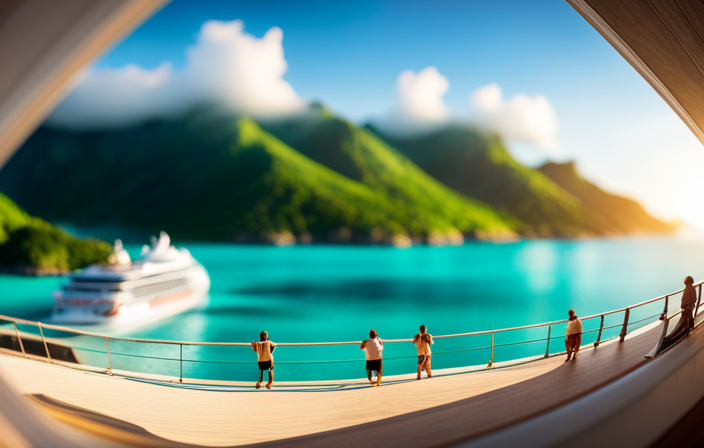
Howdy! While we make our way through the unpredictable challenges brought on by the global health crisis, the cruise industry is undoubtedly one of the hardest hit sectors. However, do not despair, fellow journey-seekers, as it appears that there is a glimmer of hope on the horizon!
In this article, we will delve into the exciting world of cruises in 2021 and explore how we can safely experience and support their future.
Like a sturdy anchor, the Centers for Disease Control and Prevention (CDC) has laid out requirements for test cruise volunteers, ensuring that we set sail with utmost caution. These requirements include being 18 years or older, fully vaccinated against COVID-19 or having no high-risk medical conditions, and agreeing to COVID-19 testing. These test cruises serve as a simulation, allowing cruise lines to fine-tune their operations and ensure the safety of both crew and passengers.
So, grab your life jackets and join me as we embark on a journey to discover the ins and outs of these test cruises. From embarkation to dining, entertainment to medical evacuation procedures, we will explore it all.
Let’s set sail and support the future of cruises in 2021!
Key Takeaways
- CDC requirements for test cruise volunteers include being 18 years or older, fully vaccinated against COVID-19 or having no high-risk medical conditions, and undergoing COVID-19 symptom evaluations before embarkation and disembarkation.
- The purpose of test cruises is to ensure safe operation during the global health crisis and simulate the passenger experience.
- Test cruises must be at least 2-7 days in duration with at least one overnight stay, and the CDC recommends a minimum voyage length of 3 days with 2 overnight stays.
- Simulated activities on test cruises include embarkation and disembarkation procedures, dining, entertainment, and medical evacuation procedures, isolation and quarantine measures, and protocols for recreational activities and shore excursions.
What is it?
I’ll explain what a test cruise is in 2021. A test cruise is a simulated voyage that cruise lines conduct to ensure safe operation despite the global health crisis. These cruises serve to test and evaluate the implementation of safety measures and protocols.
The purpose is to simulate the passenger experience and identify any areas that may need improvement. Test cruises typically last between 2-7 days, with at least one overnight stay. Safety is of utmost importance, and all volunteers must adhere to CDC requirements, such as being fully vaccinated against COVID-19 and undergoing pre and post-disembarkation COVID-19 testing.
While test cruises are not paid and cannot be part of employment conditions, volunteers have the opportunity to support the future of the cruise industry and contribute to the development of enhanced safety protocols.
Requirements for Volunteers
To volunteer for a test cruise in 2021, I must meet the CDC requirements, including being fully vaccinated against COVID-19 or having no high-risk medical conditions, and I must be willing to undergo COVID-19 testing before and after the cruise.
The evaluation process for volunteers will involve assessing their vaccination status and checking for any COVID-19 symptoms before embarkation and disembarkation.
The purpose of this evaluation is to ensure the safety of all participants and to simulate a real passenger experience. It is crucial for volunteers to comply with these requirements in order to support the future of cruises in 2021 and to help the industry operate safely amidst the global health crisis.
By following these guidelines, we can contribute to the development of effective protocols and measures that will allow cruise ships to resume operations in a responsible manner.
Test Cruise Details
The test cruises will have a duration of 2-7 days and will include at least one overnight stay. These cruises are designed to simulate the passenger experience and ensure safe operation despite the ongoing global health crisis. During the test cruises, various activities will be simulated, including embarkation and disembarkation procedures, dining, entertainment, and medical evacuation protocols.
Additionally, there will be simulated recreational activities such as casinos and spa services, as well as protocols for private-island and port of call shore excursions.
As for the sign-up process and selection for test cruises, currently, only Royal Caribbean has provided a sign-up form for volunteers. In the first week, they received 100,000 signatures. However, there haven’t been any announcements or updates regarding sign-up methods from Norwegian, Carnival, MSC, and Disney. The volunteer selection process for test cruises hasn’t been disclosed at this time.
Frequently Asked Questions
Can I bring my own food and beverages on a test cruise?
On a test cruise, passengers are not allowed to bring their own food and beverages. The cruise line provides all meals and drinks as part of the simulated passenger experience. Dietary restrictions can be accommodated upon request.
Will test cruise volunteers have access to all onboard amenities and services?
Test cruise volunteers are expected to have access to all onboard amenities and services. However, it is important to note that volunteers are not compensated for their participation in the test cruises.
Are there any restrictions on the number of passengers allowed on a test cruise?
Passenger capacity limits for test cruises are determined by the CDC. However, cruise lines that require vaccinations for passengers can bypass test cruises. Vaccination requirements are in place to ensure the safety of all participants.
How often will test cruises be conducted in 2021?
Test cruises will be conducted multiple times in 2021 as part of the cruise industry recovery and to ensure health and safety measures. The exact frequency of test cruises has not been specified.
Will test cruise volunteers be compensated in any way for their participation?
Test cruise volunteers will not be compensated for their participation. However, they will benefit from the opportunity to experience a simulated cruise, contribute to the safe operation of cruises, and help shape the future of the industry.
Claire, a creative soul with an unquenchable thirst for storytelling, is an integral part of the Voyager Info team. As a dedicated writer, she weaves captivating narratives that transport readers to enchanting cruise destinations and beyond.
Claire’s love affair with writing began at an early age when she discovered the magic of words and their ability to craft worlds and emotions. Her innate curiosity led her to explore various literary genres, but it was travel writing that truly captured her heart. Drawing inspiration from her own globetrotting adventures and encounters with diverse cultures, Claire embarked on a journey to become a travel writer par excellence.
Cruise News and Updates
How Cruise Ships Operate: Profits, Strategies, And Continuous Operation
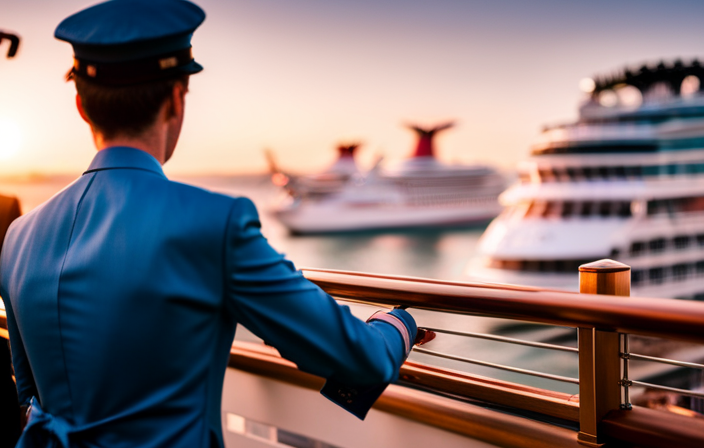
Hello! We are excited to invite you to explore the captivating world of cruise ships and learn about how they operate.
Picture this: cruise ships, those floating paradises on the sea, are not only about providing unforgettable vacations but also about generating impressive profits. In this article, we’ll explore the strategies and continuous operation that keep these magnificent vessels afloat financially.
Did you know that ticket prices for mainstream cruise lines average around $1,293? But that’s just the beginning. Additional onboard spending can add up to a whopping $429 per passenger. From casinos to spas, shopping to dining, and everything in between, cruise lines have cleverly designed their ships to maximize revenue from various sources.
But it doesn’t stop there. We’ll also uncover the secrets behind the ownership and categorization of cruise lines. From Carnival Corporation to Royal Caribbean Group and Norwegian Cruise Line Holdings, these three corporations dominate the industry with their multiple brands.
So, fasten your seatbelts (or life jackets) and get ready to embark on a journey through the intriguing world of cruise ship operations.
Let’s set sail!
Key Takeaways
- Cruise ship ticket prices include both the base fare and additional onboard spending, such as casinos, spas, shopping, dining, Wi-Fi, and drinks.
- Main sources of profit for cruise lines are casinos, spas, shopping, dining, Wi-Fi, and drinks.
- Placement of common areas like lounges, bars, and casinos strategically along passenger routes helps generate more revenue.
- Cruise lines employ various profit-making strategies, such as making most of the money upfront for premium cruise lines and catering to passengers who spend more time in ports for luxury cruise lines.
How They Make Money
I make money by offering various sources of entertainment and amenities on board, such as casinos, spas, shopping, dining, Wi-Fi, and drinks. These are the key sources of profit for cruise lines. Onboard revenue sources are crucial in generating income for the company.
Passengers spend money on these amenities and entertainment options, contributing to the overall profitability of the cruise line. Additionally, we generate revenue through passenger spending on private islands. By leasing private islands from foreign countries, we provide passengers with unique experiences, such as complimentary beach chairs and BBQ lunches. This not only enhances their vacation but also increases their spending on the island.
These onboard revenue sources and passenger spending on private islands play a significant role in ensuring the financial success of the cruise line.
Continuous Operation Process
Year-round, cruise liners tirelessly navigate the seas, seamlessly switching regions during repositioning cruises, and swiftly preparing for the next voyage on turnaround day. Crew management plays a crucial role in ensuring continuous operation. Cruise lines hire crew members from foreign countries, allowing them to save costs while maintaining a diverse and efficient workforce. These crew members work tirelessly to provide exceptional service to passengers, ensuring their comfort and satisfaction throughout the voyage.
Repositioning cruises are another aspect of continuous operation. These cruises occur when ships move from one region to another, often during seasonal changes. During repositioning cruises, cruise lines take the opportunity to offer unique itineraries and experiences to passengers. This allows them to generate additional income while optimizing the usage of their fleet.
Incorporating a 3 column and 5 row table:
| Continuous Operation Process | |
|---|---|
| Year-round operation | Without breaks |
| Repositioning cruises | Ships switch regions |
| Turnaround day | Quick disembarkation and preparation for the next cruise |
| Crew management | Hiring crew members from foreign countries |
| Additional income | Visiting multiple ports |
Ownership and Categorization
Carnival Corporation, Royal Caribbean Group, and Norwegian Cruise Line Holdings are the three corporations that own multiple cruise line brands. These corporations have a complex ownership structure, with each owning several cruise lines that cater to different market segments.
Carnival Corporation, for example, owns popular mainstream brands such as Carnival Cruise Line and Princess Cruises, while Royal Caribbean Group owns premium brands like Royal Caribbean International and Celebrity Cruises. Norwegian Cruise Line Holdings, on the other hand, owns Norwegian Cruise Line, which falls into the mainstream category.
Differentiation factors play a crucial role in the ownership structure. Each corporation strategically positions its cruise line brands to cater to different types of passengers. This allows them to capture a wider market share and maximize profits.
From mainstream to luxury, these corporations have created a diverse range of cruise lines that offer unique experiences and amenities. By offering different levels of service, accommodations, and onboard activities, they are able to attract and retain passengers with varying preferences and budgets.
The ownership and categorization of cruise line brands play a significant role in the overall profitability and success of these corporations.
Frequently Asked Questions
How do cruise ships handle medical emergencies and provide medical care to passengers on board?
Cruise ship medical facilities are equipped to handle medical emergencies. The crew receives emergency response training, and medical personnel are available on board. Passengers can receive medical care and treatments while at sea.
What safety measures are in place to prevent accidents or incidents on cruise ships?
Cruise ship safety measures include thorough training for crew members, regular safety drills, strict adherence to international safety regulations, advanced navigation systems, surveillance cameras, and emergency response protocols to prevent accidents and incidents onboard.
How do cruise ships handle waste management and environmental sustainability?
Ah, waste management and environmental sustainability, the unsung heroes of cruising. Cruise ships tackle these challenges through advanced waste treatment systems, recycling programs, and energy-efficient technologies, ensuring a greener voyage for all.
What is the process for hiring and training crew members on cruise ships?
The hiring process for crew members on cruise ships involves recruiting from foreign countries, conducting interviews and background checks, and providing training in various areas such as safety, customer service, and emergency procedures.
How do cruise ships handle security and ensure the safety of passengers and their belongings?
Cruise ship security is a top priority, ensuring passenger safety and protecting their belongings. Vigilant surveillance systems, trained security staff, and strict access control measures are implemented to prevent incidents and swiftly respond to emergencies.
Claire, a creative soul with an unquenchable thirst for storytelling, is an integral part of the Voyager Info team. As a dedicated writer, she weaves captivating narratives that transport readers to enchanting cruise destinations and beyond.
Claire’s love affair with writing began at an early age when she discovered the magic of words and their ability to craft worlds and emotions. Her innate curiosity led her to explore various literary genres, but it was travel writing that truly captured her heart. Drawing inspiration from her own globetrotting adventures and encounters with diverse cultures, Claire embarked on a journey to become a travel writer par excellence.
Cruise News and Updates
The Fascinating World Of Cruise Ships: Size, Power, And Environmental Impact
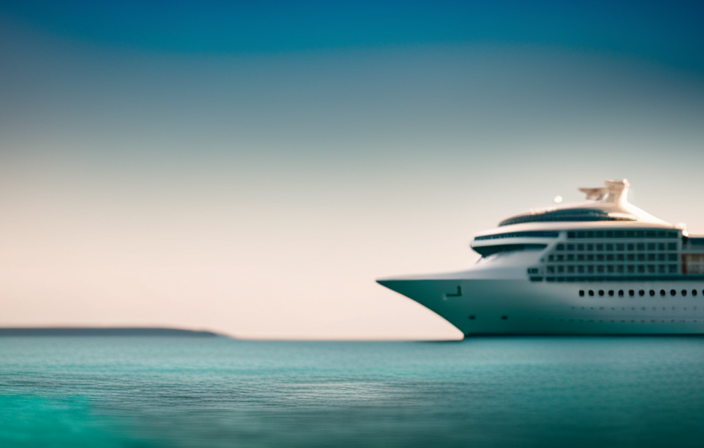
Oh, the world of cruise ships. It’s a mesmerizing realm, filled with magnificent vessels sailing the vast oceans, taking passengers to distant, enchanting locations.
The sheer size and power of these floating marvels never fail to astound me. From their towering lengths, ranging from 900 to 1,100 feet, to their impressive fuel tanks, holding a staggering 1 to 2 million gallons of fuel, cruise ships are a testament to human engineering. Some even harness the energy of liquefied natural gas, with engines so colossal they could fill a room. It’s truly awe-inspiring.
Yet, amidst this marvel, we must also consider the environmental impact. Many cruise lines still rely on diesel-powered engines, but the use of LNG reduces carbon emissions by a significant 30%.
As a passionate traveler and writer, I am eager to delve into the fascinating world of cruise ships, exploring their size, power, and environmental impact. Join me as we embark on this journey of discovery and exploration.
Key Takeaways
- Cruise ships are massive vessels that can range in length from 900 to 1,100 feet.
- Some cruise ships use liquefied natural gas (LNG) as fuel, reducing carbon emissions by 30%.
- The environmental impact of cruise ships, particularly diesel-powered engines, is a concern and contributes to air pollution and climate change.
- The adoption of sustainable cruise practices, including the use of LNG fuel, is crucial for a more sustainable future and to mitigate the environmental impact of cruise ships.
Cruise Ship Specifications
Cruise ship specifications are an important aspect to consider when understanding their size, power, and environmental impact. These massive vessels can range in length from 900 to 1,100 feet, accommodating thousands of passengers and crew members.
Fuel consumption is a significant consideration, with cruise ships typically carrying 1-2 million gallons of fuel in their tanks. Some ships are now incorporating LNG tanks, which reduce carbon emissions by 30%.
The shipbuilding process is a complex endeavor, with engines playing a crucial role in powering these floating cities. Cruise ships are equipped with 4-6 engines, each generating an impressive 18.5 megawatts of power. These engines, measuring up to 45 feet in length and 27 feet in height, propel the ship at an average speed of 18-22 knots.
Additionally, cruise ships are equipped with two anchors weighing 10-20 tons each, ensuring stability while at port.
Engine and Power Details
When it comes to engine and power details, it’s important to consider the environmental impact and the need for alternative fuel sources.
Cruise ship propulsion plays a crucial role in determining the ship’s fuel efficiency and carbon emissions. Most cruise ships are equipped with 4-6 engines, each generating 18.5 megawatts of power. These engines can measure up to 45 feet in length and 27 feet in height.
While many cruise lines still rely on diesel-powered engines, there is a growing shift towards using liquefied natural gas (LNG) as a more environmentally friendly fuel source. LNG-powered ships can reduce carbon emissions by up to 30%.
As the cruise industry continues to evolve, it’s crucial for shipbuilders and operators to prioritize fuel efficiency and explore sustainable propulsion options to minimize their environmental impact.
Environmental Impact
As an enthusiast of the cruise industry, I am deeply concerned about the ecological consequences of traditional diesel-powered engines commonly used on cruise ships. Cruise ship emissions have a significant impact on the environment, contributing to air pollution and climate change. However, there are sustainable cruise practices being implemented to address these concerns. One such practice is the use of LNG-powered fuel, which reduces carbon emissions by 30% compared to diesel. This is a positive step towards minimizing the environmental impact of cruise ships.
To visualize this information, here is a table highlighting the environmental impact of cruise ship emissions:
| Environmental Impact | Consequences |
|---|---|
| Air pollution | Increased respiratory |
| problems | |
| Climate change | Rising sea levels |
| and extreme weather |
By adopting sustainable cruise practices and transitioning to cleaner fuel sources like LNG, cruise ships can help mitigate their environmental footprint and contribute to a more sustainable future.
Frequently Asked Questions
What are some popular destinations for cruise ships?
Top rated cruise ship destinations include the Caribbean, Mediterranean, Alaska, and the Baltic Sea. These locations offer stunning scenery, cultural experiences, and a variety of activities. The cruise industry is adopting eco-friendly practices to reduce its environmental impact.
How many passengers can a typical cruise ship accommodate?
A typical cruise ship can accommodate thousands of passengers, resembling a floating city. With various cruise ship designs catering to different market segments, the cruise ship market continues to evolve to meet the needs of travelers worldwide.
What are some unique amenities or features found on modern cruise ships?
Luxury accommodations and innovative dining experiences are some unique amenities found on modern cruise ships. Passengers can enjoy spacious suites, private balconies, gourmet restaurants, and specialty dining options that cater to various tastes and dietary preferences.
How do cruise ship companies ensure the safety and security of their passengers?
Cruise ship companies ensure the safety and security of their passengers through various measures. They have well-equipped medical facilities onboard and conduct regular emergency drills to prepare passengers for any potential emergencies that may arise during their voyage.
What are some common activities or entertainment options available on cruise ships?
Cruise ships offer a wide range of activities and entertainment options. From gourmet dining experiences to luxurious onboard spa and wellness facilities, passengers can indulge in relaxation and enjoy a variety of amenities during their cruise vacation.
Claire, a creative soul with an unquenchable thirst for storytelling, is an integral part of the Voyager Info team. As a dedicated writer, she weaves captivating narratives that transport readers to enchanting cruise destinations and beyond.
Claire’s love affair with writing began at an early age when she discovered the magic of words and their ability to craft worlds and emotions. Her innate curiosity led her to explore various literary genres, but it was travel writing that truly captured her heart. Drawing inspiration from her own globetrotting adventures and encounters with diverse cultures, Claire embarked on a journey to become a travel writer par excellence.
-

 Cruise FAQs3 days ago
Cruise FAQs3 days agoHow To Turn On Cruise Control Tesla Model 3
-

 Cruise FAQs3 months ago
Cruise FAQs3 months agoWhat Is The Weather Like On A Transatlantic Cruise In April
-

 Cruise FAQs3 days ago
Cruise FAQs3 days agoHow To Set Cruise Control Tesla Model Y
-

 Cruise FAQs3 months ago
Cruise FAQs3 months agoHow to Contact Someone on a Carnival Cruise Ship
-
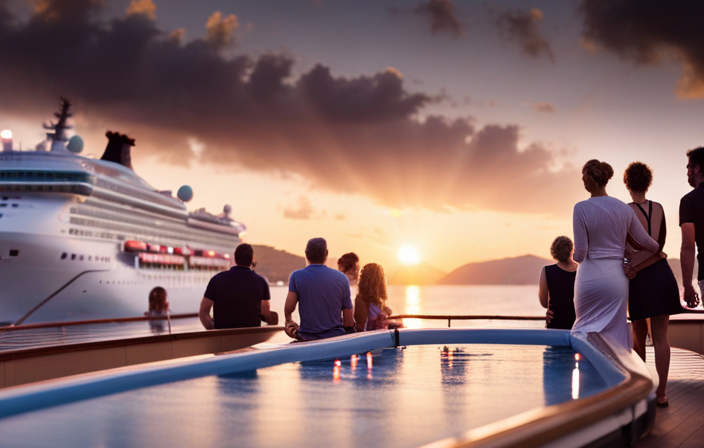
 Cruise Lines3 months ago
Cruise Lines3 months agoWhat Is The Average Age Of Passengers By Cruise Line
-

 Onboard Experience1 week ago
Onboard Experience1 week agoFinding Deals On Unsold Cruise Cabins: Tips And Strategies
-
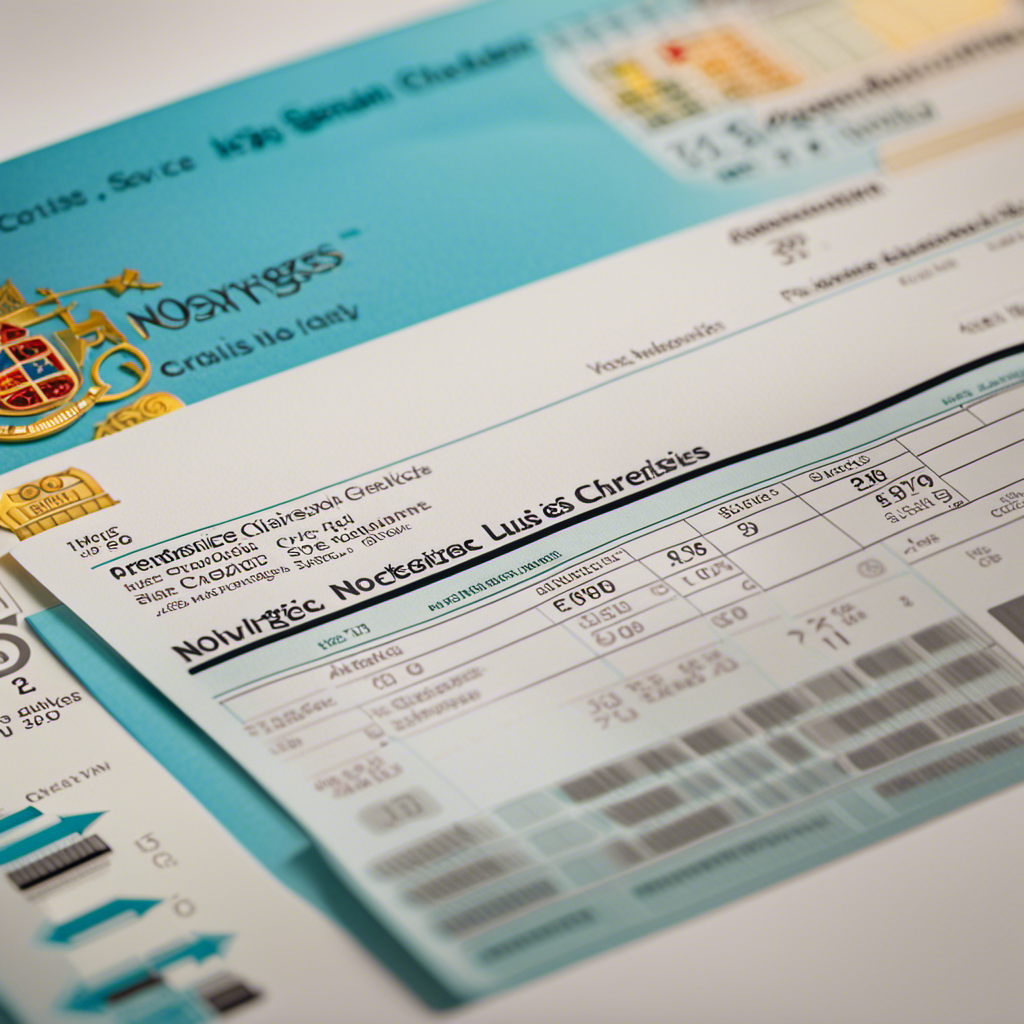
 Cruise Lines3 months ago
Cruise Lines3 months agoDecoding Norwegian Cruise Line’s Gratuities and Service Charges
-
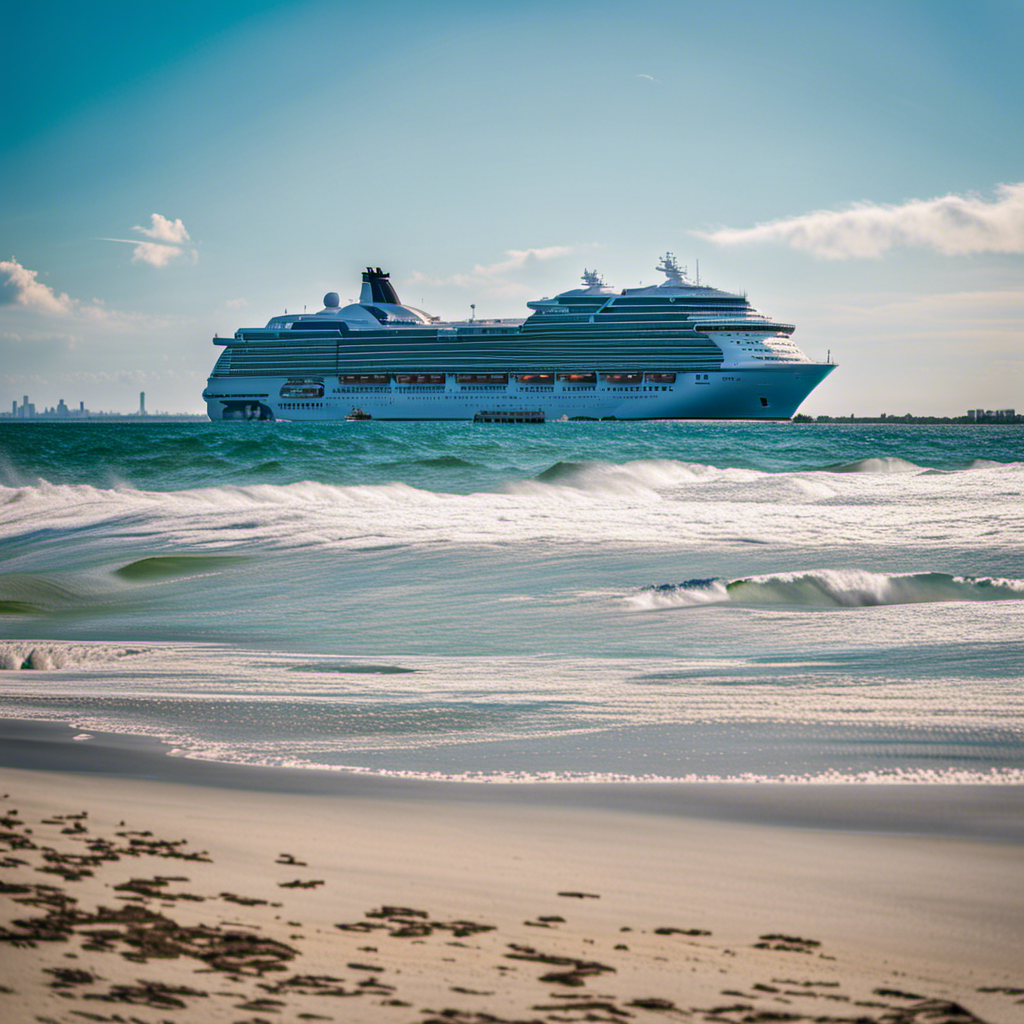
 Cruise Lines3 months ago
Cruise Lines3 months agoWhat Cruise Lines Depart From North Carolina








